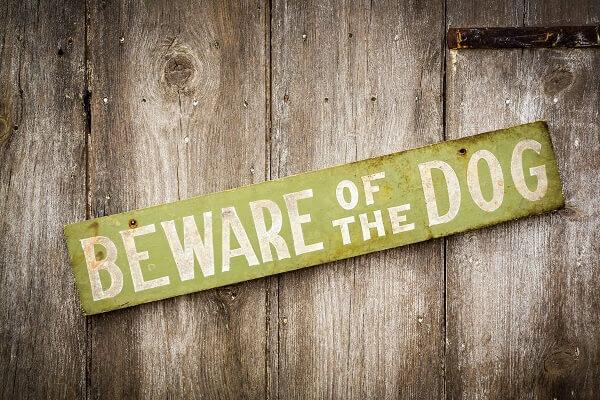
In the United States, 4.7 million Americans are seen in hospitals for dog bites each year – sadly most of these are children. All bites carry a high risk of infection, which is why immediate medical attention is essential.
How Cumming Physicians Treat Dog Bites
There are steps you must take immediately after a dog bite – regardless of how big or small – to prevent infection. Also, you must see a physician that same-day for further assessment, because depending on the bite situation, medications might be required.
When a dog bites, their front teeth are what grab and compress your skin. The smaller teeth in their mouth tear, which is why the wounds are jagged. Once these wounds become infected, it is difficult to control them, because there are often multiple layers of tissue affected.
7 Immediate Steps to Take After a Dog Bite
If a dog bites you, take these steps immediately:
Press down on the wound gently.
If the bite is bleeding, press on it gently with a clean cloth. Pressing can also help blood flow, which will flush out bacteria from the wound – a critical step to take.
Wash the wound.
Even if you intend to go to the hospital or your physician’s office, immediately flush the wound with water and mild soap. This will help remove any bacteria present inside the wound and on the skin’s surface.
Slow down the bleeding.
Now you want to press to slow bleeding with a clean, dry cloth.
Seek medical attention.
If you have multiple bite wounds, go to the emergency room right away. Do not delay medical treatment. Numerous bite wounds significantly increase the chance of an infection. Even for a single bite wound that is not bleeding, call your physician’s office and schedule an appointment. If wounds are deep and bleeding profusely, call 9-1-1.
Keep the area dry and clean.
After you have had the wounds treated, keep them clean and dry. Follow any post-treatment instructions given to you by the treating physician as well.
Change bandages.
The worst thing you can do is leave a bandage in place. Regardless of how much it might hurt, you must change the dressings at least once per day – or more depending on how your physician instructs you.
Know the signs of infection.
Know the typical signs of infection, such as reddening, swelling, puss, and discharging from the wound site. If you see any of these signs, immediately see a physician.
How Doctors Will Treat the Wound
Whether you go to your doctor’s office or the emergency room, the physician will follow several steps to prevent infection and further complications:
Examination
First, your doctor will examine the wound carefully to see if the bite penetrated the muscles and caused any damage to nerves, tendons, or bones. If these are present, then they will need to take further steps to correct them.
Cleaning the Wound
Your physician will clean the wound using antiseptic cleansers. They may also have to remove any dead tissue around the wound and open portions of the wound so that they may thoroughly clean them.
Sutures
If the bites are deep enough, you may receive stitches. However, today many physicians shy away from their use because closing the wound may lead to infection more than allowing it to close naturally.
Antibiotics
Most likely you will be prescribed antibiotics for one to two weeks. These may prevent or treat any infections suspected.
Tetanus Shot
If it has been a few years since your tetanus shot, your physician will update your tetanus shots too.
Common Infections from Dog Bites
Approximately 50 percent of dog bites will have bacteria introduced into the tissue and blood. These include staphylococcus, streptococcus, and Pasteurella. Most physicians will prescribe antibiotics out of precaution rather than test and confirm these infections.
What about Rabies Treatments?
Today, it is rare for a dog in the United States to have rabies. The only way to test for rabies is to euthanize the animal and conduct a brain analysis. Therefore, if animal control suspects the dog to have rabies, they will euthanize and test. They will also inform you of the test results. If the dog is suspected to have rabies, your physician may have you undergo rabies treatments.
Rabies treatments are extensive and expensive. Therefore, most doctors will not treat for rabies unless they are sure the dog carried the infection.
Today, rabies treatments involve one fast-acting show, which prevents the rabies virus from becoming an infection. Part of the injection is done at the bite site, to stop the infection. Then, you will receive a series of vaccines, which are given in four doses over the course of 14 days.
Have You Or A Loved One Been Injured By A Dog Bite?
If you’ve been injured by a dog bite you need to speak with an experienced dog bite attorney as soon as possible. Contact us online or call our office directly at 855.GA.INJURY or 404.991.5950 to schedule your free consultation.
 Georgia Personal Injury Lawyer Blog
Georgia Personal Injury Lawyer Blog

